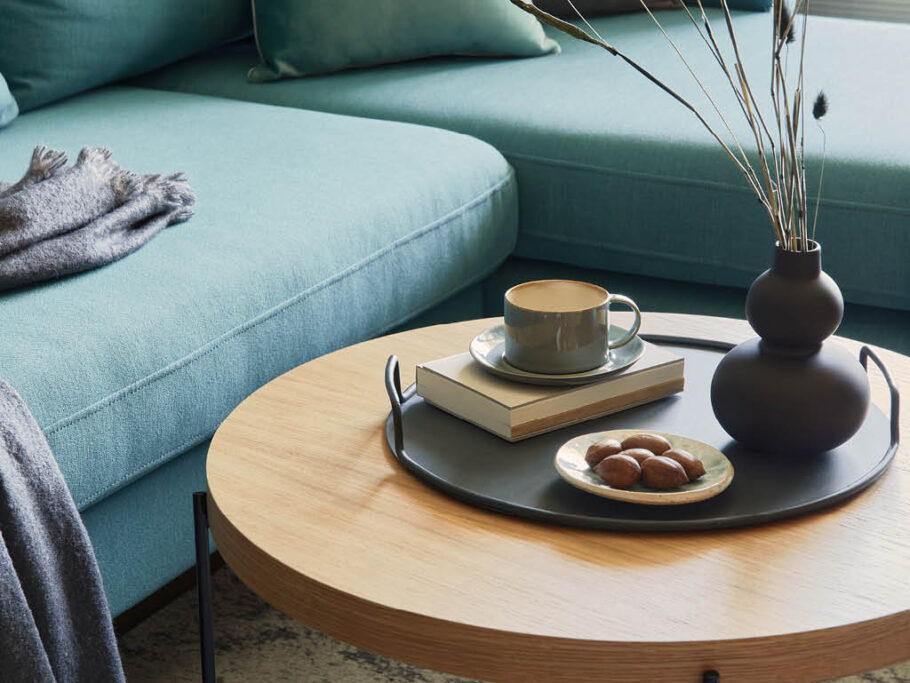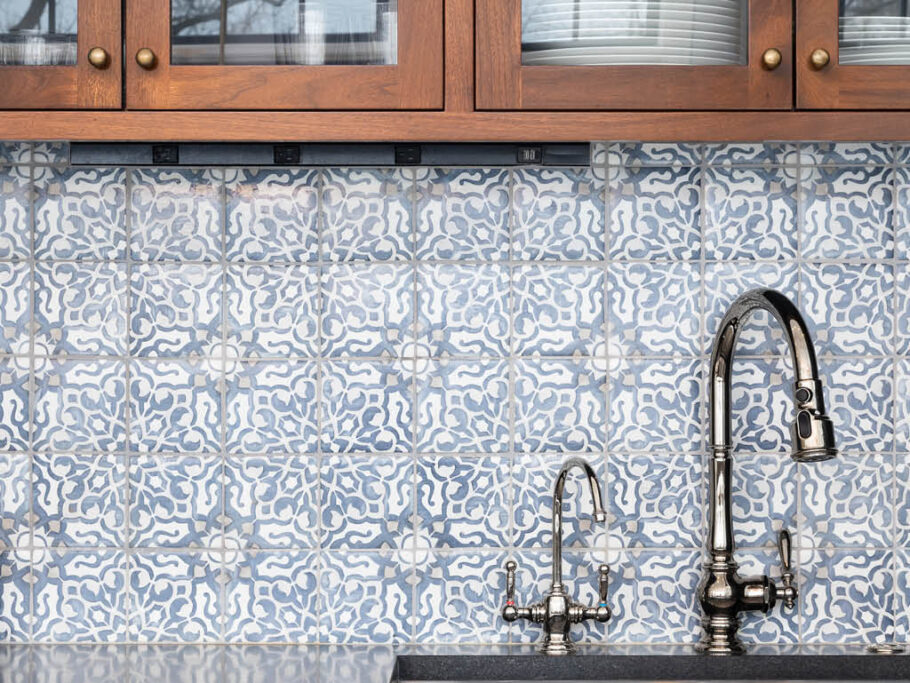It’s Easy Being Green
Photography by Cati Teague
Gina Sims, founder of the Georgia-based firm Gina Sims Designs, is a master of color and quirk. Here she discusses the renovation of a Victorian-era residence in Atlanta and how she honored the home’s architecture by bringing in color in a fun yet refined way.
How would you describe your approach to interior design?
My team has a fun time taking chances and being bold, and I’m always looking for the opportunity to apply that in every job we do. I don’t want to miss anything. I also always ask my clients, “Do you have something weird from that trip you took?” or “Did Grandma send you something bizarre?” Taking something the client already has and giving it new life is my favorite thing to do.
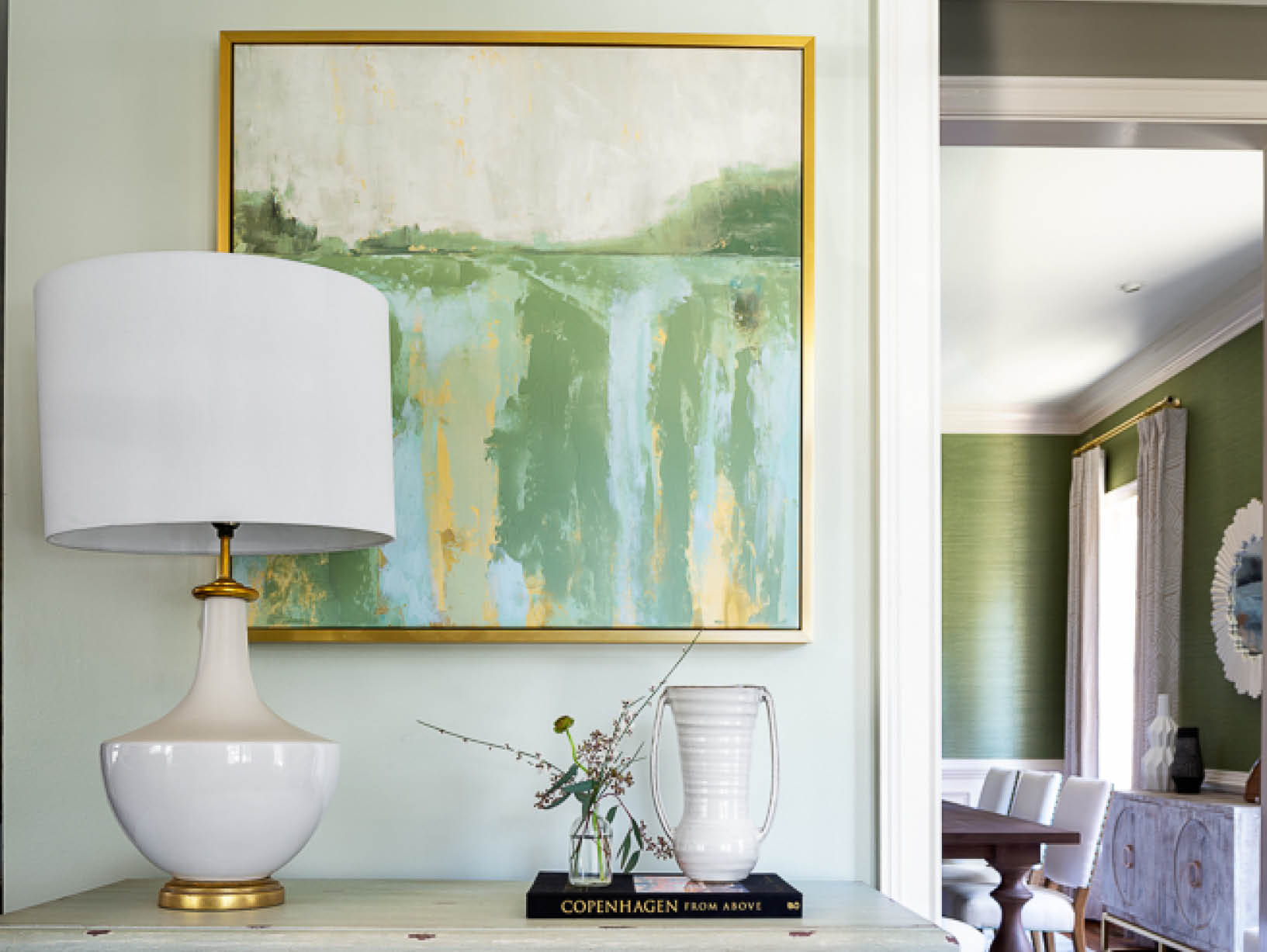
What are your first steps when working on a new project?
First, I ask people what they own that’s awesome and ask them where they’ve traveled, where their family is from, and about their interests. After that, we’ll discuss the budget, what they already love about the space, and what they don’t like. I also have to figure out what they want to do in the room and what we need to do to make it work for them—that’s the functional side.
The last part is the aesthetic. I ask my clients to do a lot of homework; I need to know what makes them happy or I can’t do my job. They have to show me images of what they think is awesome. It may seem like nothing to them, but I can look at the image and say, “Oh, there’s so much contrast here” or “You love a neutral rug and a bold chair.” The design must incorporate the function of the room and the pieces they love.
You’re from California, your business is based in Georgia, and you work on projects across the country. Do you find that you have to shift your design mindset depending on the location?
It does change a little bit. If I’m working on the East Coast, it’s just a smidge more formal. If I’m on the West Coast, it’s probably a bit more relaxed or midcentury. Clients will also go into other people’s homes and see a certain design, so that will play into what they like and want for their own home. But, in the end, they’re going to call me because they resonate with my style.
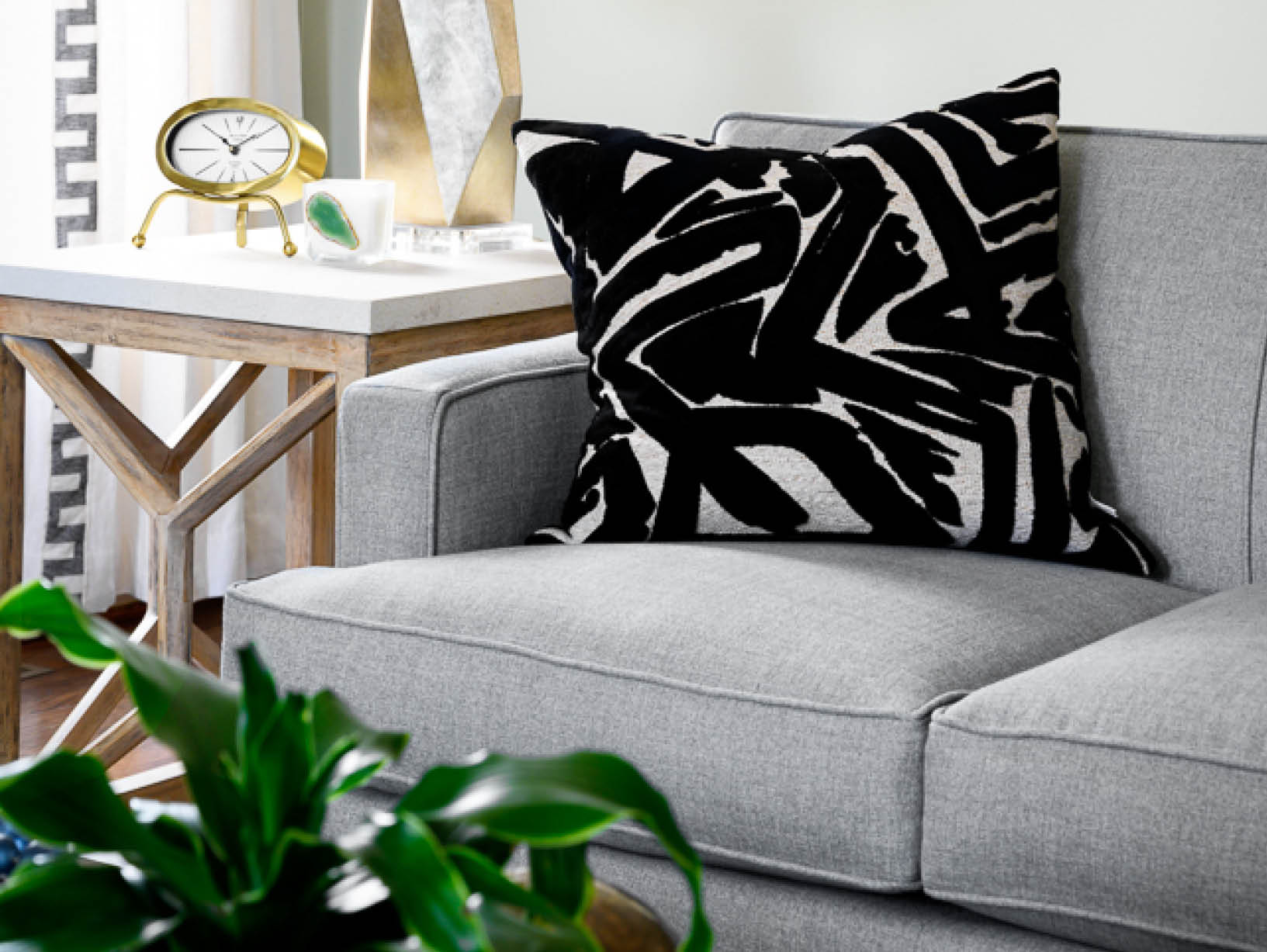
Your Seeing Green project is in a very traditional-style home in Atlanta, and it’s designed for a young family with children. What were some of the biggest considerations?
Since it’s a Victorian-era home, bringing in too many modern elements wouldn’t work. So we needed to pay attention to the architecture of the building and let it influence the decisions that we made. We wanted it to be traditional but also highlight that a really fun couple with dogs and kids live here. They didn’t want it to look like their moms’ houses.
The classic architecture adds so much to the design. How did you preserve and enhance the integrity of the home while also bringing in modern touches?
You have to pay attention to the architecture of the house, no matter what it is. In this case, we kept the chandeliers and other main lighting fixtures in the entryway, living room, and dining room. All those elements were already there, and they worked.
We were also intentional with textiles. We used the full length of the windows by choosing full-length window treatments to add sophistication and drama. Even when we added a funky design element, we kept traditional drapes behind it.
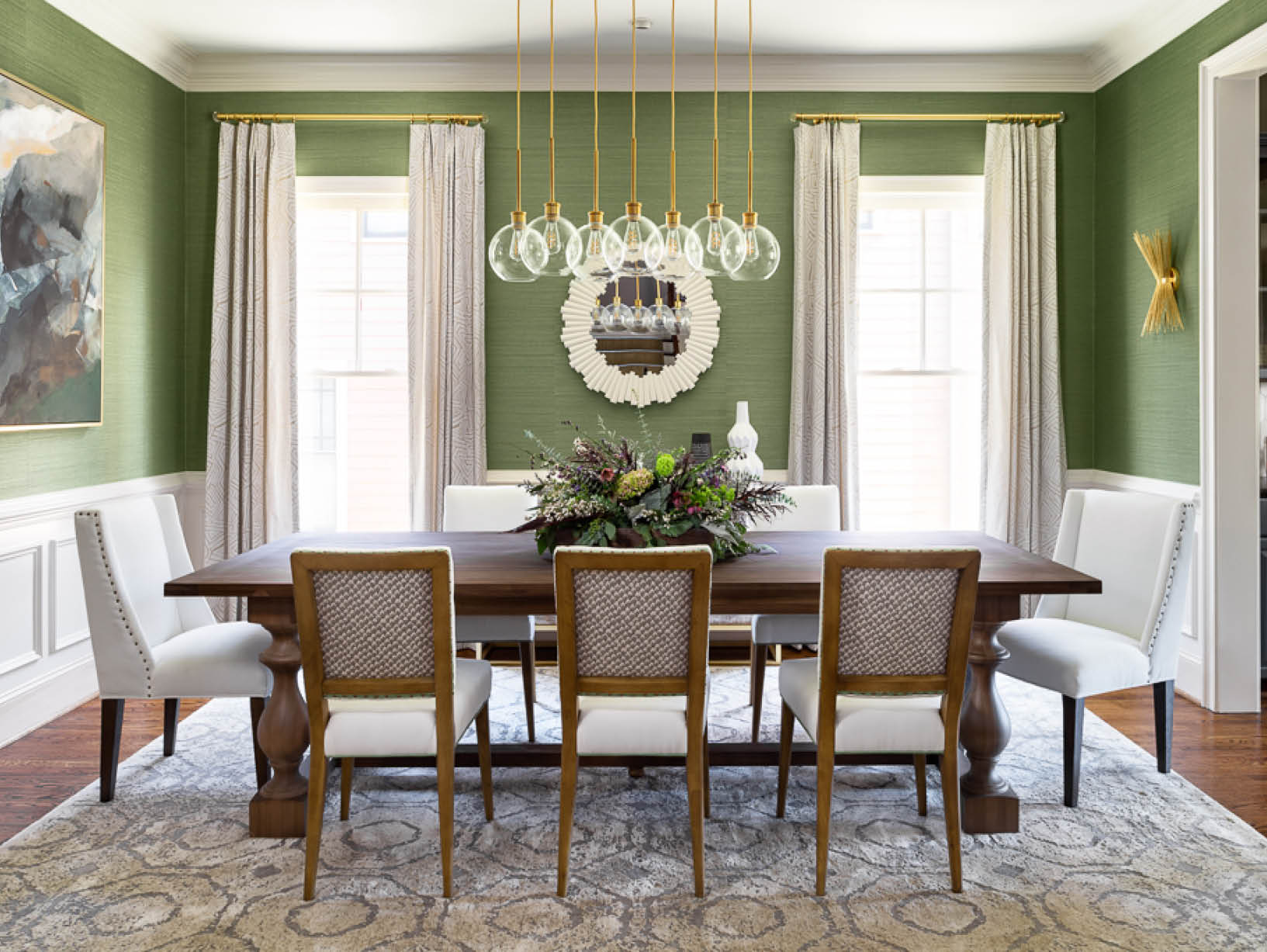
Green is clearly the main color in this project, but there are other subtle hints of color throughout each space. How do you achieve good balance when blending multiple colors and patterns?
We chose to highlight the main color, green, in the dining room. The walls are a vivid green, and everything in the other spaces stems from that. In the living room, we added gray sofas and white window treatments and then left the walls a light-blue color—there’s not a lot of color in the surroundings. We added color back in with the living room rug and small pops throughout. We really let the green in the dining room take center stage.
The colors in the artwork fit well with each area of the house. Did you select these pieces, or were they owned by the family?
The family had very little art—just some family pictures. We had to start from scratch. The art we use typically depends on the clients’ budget. Sometimes we can go to galleries and select a piece by a fabulous artist; other times we have to think through what great design-trade art source we can get to fill a wall, and that’s what we did for this project. We showed the clients several options and asked what they liked.
When a client has children, as was the case for this project, how do you go about designing each room to be functional and fun but also aesthetically pleasing?
The dining table comes to mind because if, for example, you have a kid who plunges a fork into your table, that’s going to be a bummer. So we went with a table that doesn’t have a completely smooth finish. We were also conscious of using performance fabrics. For the dining room chairs, we went with a white Crypton performance fabric; if they spill something on it, it will roll right off.
In the kids’ space off the kitchen, all the furniture is made with colorful performance fabric, and the ottomans are storage ottomans. We went with ottomans instead of a coffee table because they can move them around easily for extra seating, put their feet up, and use them to store things, and there are no hard edges.
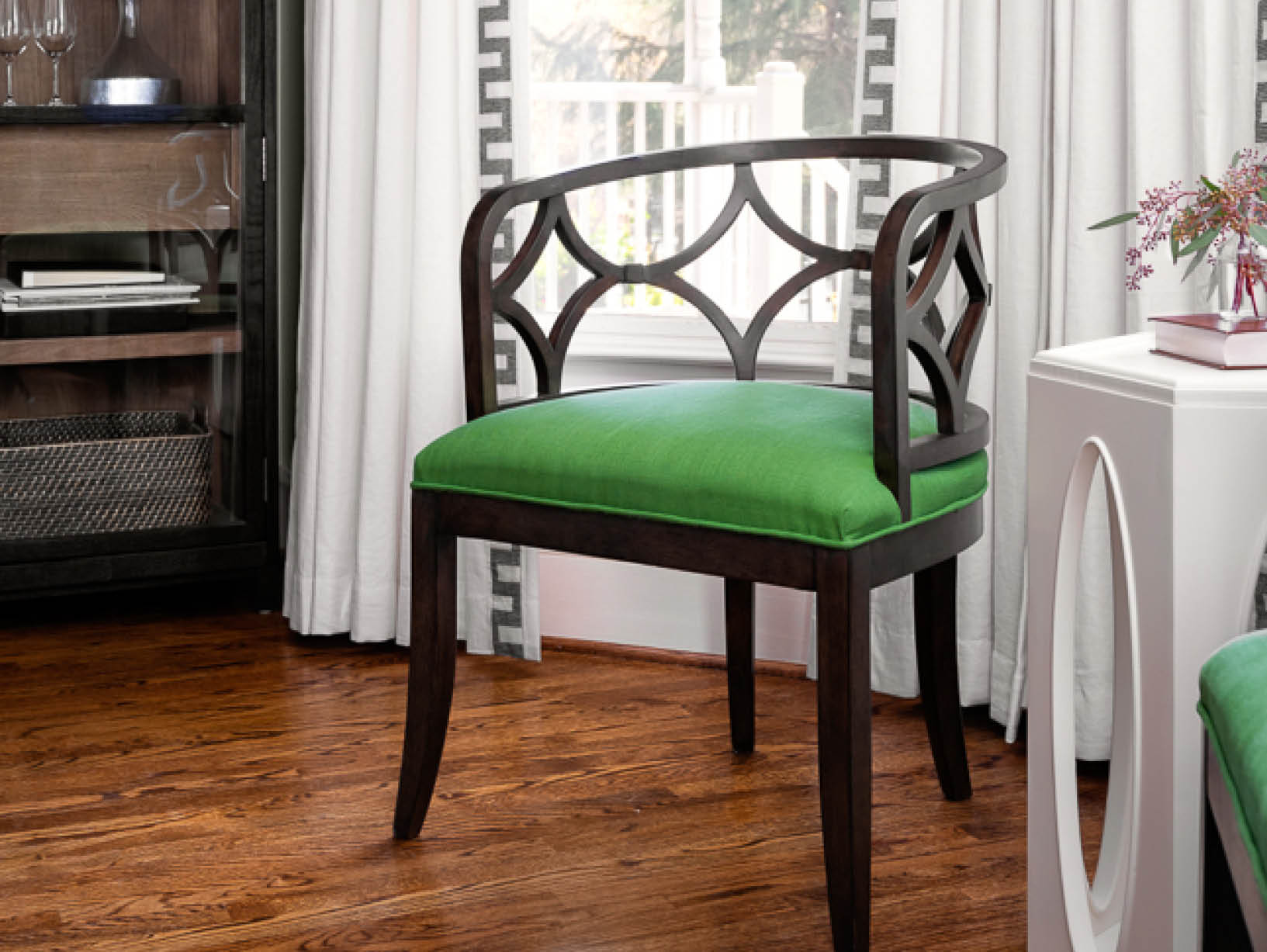
Do you tend to gravitate toward certain design elements?
I do with my use of pattern. Performance fabrics have come a long way, which makes it easy when a client wants a neutral sofa. If we keep the sofa a neutral color, we can add a great pillow or put the sofa on top of an amazing rug, or I’ll try to talk the client into a patterned fabric for a chair.
Pattern also helps a design look more custom. You can’t go to any Crate & Barrel and buy a great patterned sofa, for example. You have to hire someone who knows how to bring those elements together.

Are there any design elements you shy away from?
Oversaturation and overuse of gray. I love color, but I also want neutrals to have a little bit of warmth in them.
What is your team’s mission for each of your projects?
I like bringing out people’s personalities and having fun with clients. Our mission is to help people have fun with their house and to do everything with quality and sophistication without taking things too seriously. Every design should feel good and natural.
For more info, visit ginasimsdesigns.com




